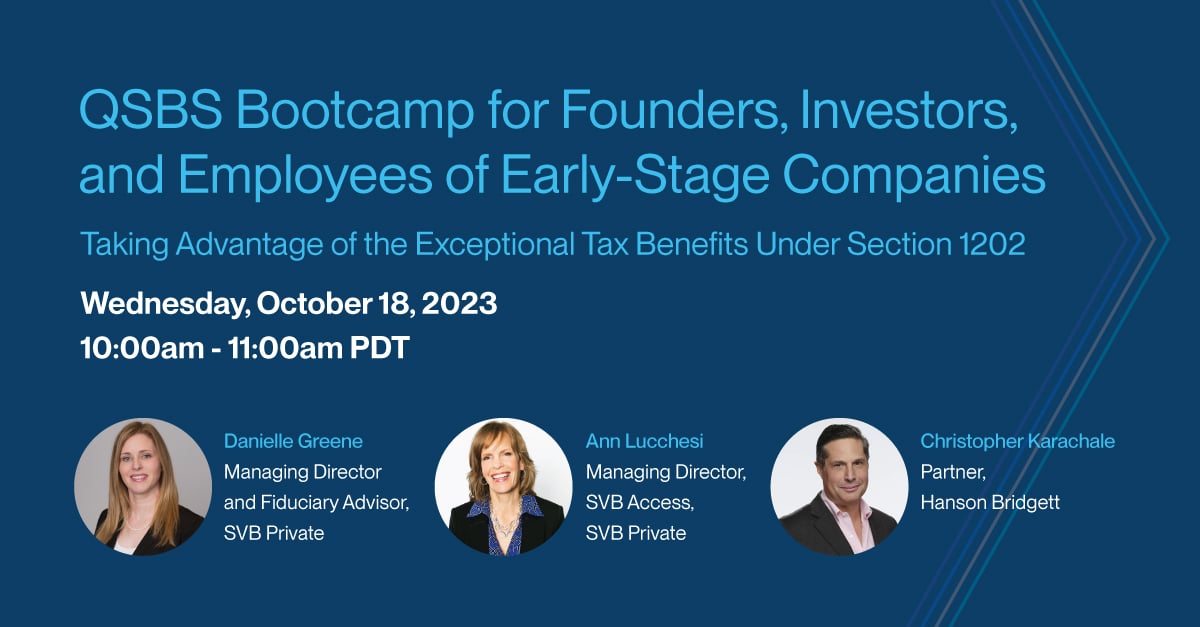It’s no wonder that important year-end tax planning is often overlooked—the end of the year is a hectic time as increased personal commitments are shoehorned into busy work schedules. This article can help ease your burden; here are ten straightforward tips for a more successful tax season.
1. Select donor-advised funds and foundations
You may want to consider making a more significant-than-usual charitable gift. In addition to fulfilling a philanthropic aspiration, a charitable contribution may provide valuable federal and state tax deductions. Using a Donor Advised Fund (DAF) or private foundation can provide greater flexibility than making direct gifts to charities. DAFs enable you to manage the timing of charitable deduction from a tax perspective.
Complex assets including private and restricted stock and real estate may also be eligible for charitable contributions to DAFs. Donors avoid paying capital gains tax on contributions of long-term shares with low basis. Consult with your CPA before making contributions.
2. Charitable contributions of Required Minimum Distributions
If you are receiving Required Minimum Distributions (RMDs) from an IRA, you can direct your IRA custodian to pay some or all of the RMD to a qualified charity (a Qualified Charitable Distribution, or QCD). By directing the RMD payment to a qualified charity, you exclude the contributed RMD amount from your income. You do not receive an itemized deduction for the QCD. However, by excluding the income on your return you are taking an “above the line” deduction (a deduction for AGI), which could lower your tax liability more than if you made an itemized deduction.
In 2023, a taxpayer can direct up to $100,000 of an RMD to a qualified charity. If you file jointly with a spouse, the spouse also has the ability to make a QCD of up to $100,000 from his or her own RMD. Under the Secure 2.0 Act, the $100,000 QCD RMD exclusion will be indexed for inflation beginning in 2024. Keep in mind that you must qualify for all QCD requirements to be eligible for income reduction.
3. Make Roth IRA conversions
Year-end tax planning can be especially beneficial to individuals with uneven income streams, providing the opportunity to accelerate or defer compensation. In a lower-than-usual income year, it's often prudent to review existing traditional IRAs and former employer 401(k) plans, and work with a tax professional to determine whether a conversion to a Roth IRA would be beneficial.
Conversions require federal and state income taxes in the year of the transaction. However, all principal and earnings could grow income tax-free from that point on. Some retirement accounts, including Roth IRAs, may allow you to invest in non-traditional private assets, such as fine art and collectibles, and provide an opportunity for substantial tax-free growth. Moreover, many of our clients use Self-Directed IRAs to make private investments.

4. Deduct investment interest expenses
The mortgage interest deduction is currently limited to the interest on the first $750,000 of mortgage debt. To take advantage of additional interest deductions and tax deductibility rules, consider using the investment interest expense deduction strategy, especially if your balance sheet normally carries substantial amounts of Net Investment Income. It is important to optimize balance sheet leverage from a tax standpoint and maximize tax deductions such as investment interest expenses.
5. Contribute to self-employed retirement plans
Many individuals use self-employed retirement plans as an opportunity to defer income tax liability. The two most popular plans, the self-employed 401(k) plan and the SEP IRA, allow for up to $66,000 contributions in 2023, plus a $7,500 catch-up amount for 401(k) plans, all pre-tax. There are additional retirement savings options, such as defined benefit and cash balance plans that allow for significantly higher pre-tax contributions as well.
6. Consider annual gifting and wealth transfers
Consider using your annual gift tax exclusion amount to a non-spouse ($17,000 per donor, per recipient) by funding a custodial account (UTMA/UGMA). Ideally, gifts of low basis stock to a custodial account could be sold during a more preferential tax bracket environment. Also, gifts to minors can be provided within the gift exclusion amount to fund a traditional IRA or a Roth IRA up to $6,500 per year.
Contributions to a 529 college savings plan would also fall into the annual gifting category and can be front-loaded for up to five years of the annual gift tax exclusion amount ($85,000 for individuals in 2023) without a gift tax consequence. For additional gifting advice, read: Educational gifts that make for wise investment strategies.
7. Consider Series I Savings Bonds
With interest rates on the rise, savings bonds are back on investors’ radars. The annual interest rate on Series I bonds purchased November 2023 through April 2024 is a respectable 5.27%. The bonds, backed by the federal government, are also exempt from state and local taxes. Federal taxes can also be avoided if the bonds are used to fund qualifying educational expenses. With the current interest rate environment, it makes sense to revisit the advantages of bond investments with your Private Wealth Advisor.
8. Avoid year-end mutual fund investments that include capital-gain distributions
When investing in mutual funds, the timing of your purchase may have unforeseen tax consequences. Mutual funds that make capital-gain distributions, typically in November or December, are taxable if your investment is made before the fund’s record date.
When considering a late-year mutual fund purchase, it can be advantageous to make your investment after the fund’s distribution eligibility date, thus avoiding the associated taxes. The good news is this isn’t a problem for mutual fund investments made for tax-deferred accounts such as IRAs.
9. Consider 1040 Schedule 1, Part II deductions
In addition to either the standard deduction or itemized deductions, some taxpayers have the ability to take deductions that appear on Schedule 1, Part II of their Form 1040. These deductions are available even if the taxpayer doesn’t itemize his or her deductions. Some of the more common deductions include:
-
-
deduction for contribution to a health savings account (HSA)
-
deductible portion of self-employment tax
-
self-employed health insurance deduction
-
alimony (depending on the date of divorce or separation agreement)
-
IRA contribution (subject to other limitations)
-
Student loan interest deduction
-
There are other deductions available as well. The deductions that appear on Schedule 1, Part II are considered “above the line” deductions and go into calculating a taxpayer’s adjusted gross income.
It is important to realize that these deductions do not apply to all taxpayers. A review of Schedule 1, Part II should be part of a taxpayer’s year-end planning so any available deductions are not missed.
10. Employ tax-loss harvesting
Tax-loss harvesting is another effective tax strategy to consider. When selling a position, investors may realize a capital loss and potentially write off up to $3,000 of collective losses against ordinary income—the rest can be used against any capital gains realized in the year. Any unused capital losses could be carried forward into future years indefinitely, providing a valuable tax-management tool.
It is important to be familiar with the wash sale rule when considering this strategy, as it may disallow the loss if you re-purchase the same or a substantially equal security 30 days before or after the sale date. In addition, Section 1244 losses may be useful if you invested in an early-stage private company and the business closed down. Those losses are treated as ordinary losses rather than capital losses on your tax return and could result in a greater tax benefit.
Two extra tax strategies just for investors and entrepreneurs
If you’re an entrepreneur or investor, you have some unique year-end tax requirements because of the nature of your employment. Here are two additional strategies to help minimize your tax burden.
1. Exercise Incentive Stock Options
Check with your CPA regarding the opportunity to exercise Incentive Stock Options (ISOs) without incurring additional tax liability under the alternative minimum tax (AMT) exemption. If you are anxious to get the clock ticking for long-term capital gains treatment, consider exercising ISOs early next year as the AMT may not be due until April of the following year. Be mindful of possible tax changes, including those surrounding equity compensation taxation.
2. Assess capital gains and losses, including Qualified Small Business Stock
Many of our clients have assessed the opportunity to reduce their capital gains burden by taking advantage of the Qualified Small Business Stock (QSBS) exemptions. This can be beneficial for founders, early employees and investors. If a stock is eligible for the QSBS exemption, one may be eligible for up to a 100 percent exclusion from the federal capital gains realized from the sale. There are strict requirements for the stock to qualify as QSBS and the percent of tax exclusion varies, so be sure to bring up the issue with your CPA.
With the final months of the year upon us, it is an opportune time to review personal finances to ensure you do not leave potential tax savings on the table. We would be happy to work alongside your tax and estate advisors to determine the most effective approaches for you. Simply contact an SVB Private Wealth Advisor to get started on your strategies.

















